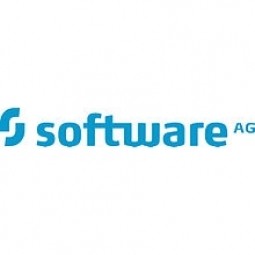Customer Company Size
Large Corporate
Region
- America
Country
- United States
Product
- Adabas & Natural on IBM Z
- webMethods for integration
- webMethods EntireX
Tech Stack
- IBM Z platform
- Web services
Implementation Scale
- Enterprise-wide Deployment
Impact Metrics
- Productivity Improvements
- Customer Satisfaction
Technology Category
- Application Infrastructure & Middleware - API Integration & Management
Applicable Industries
- National Security & Defense
Applicable Functions
- Business Operation
Use Cases
- Real-Time Location System (RTLS)
- Process Control & Optimization
Services
- System Integration
About The Customer
The Delaware Judiciary is composed of the Supreme Court, the Court of Chancery, the Superior Court, the Family Court, the Court of Common Pleas, the Justice of the Peace Court, specialty courts and related judicial agencies. The oldest business court in the U.S., the Delaware Court of Chancery was established in 1792 and has broad jurisdiction over disputes involving Delaware businesses. Delaware is also known for offering a safe regulatory haven for around 1.3 million legal entities. From the Supreme Court to specialty courts, as well as related judicial agencies, there are more legal entities in Delaware than there are people. That keeps the state’s court system very busy, and they are constantly looking for ways to streamline their courtroom processes to improve the experience on all sides of the bench.
The Challenge
The Delaware Judiciary was facing several challenges. They needed to provide a better citizen/customer experience and give judges and attorneys access to up-to-date case information. However, they lacked the ability to quickly change or update data in databases. They also wanted to keep their original programs running on the reliable IBM Z platform while enabling web services. The courts were handcuffed by legacy IT systems. It was taking days to sync the data manually. Clerks in one court would send the data to be uploaded by another clerk in another court. Data on many topics and from many sources, including attorneys and judges assigned to the cases, arrests by police and fines by other courts, has to flow through the system continually. This was not happening in Delaware.
The Solution
The Delaware Judiciary decided it needed a better way to access and expose information from its proven Adabas & Natural system and other systems. They used Software AG's webMethods, the court system was able to access all this data from the different court systems while keeping it in sync – without touching the original programs running on the IBM Z platform. By using web services, the disparate information from all these different systems can be unified into a consistent format by mapping the field names of one system with the field names in another system. They used webMethods EntireX to create web services and URLs that app developers could consume one at a time, adding data elements, verifying them and stopping them if they were incorrect. New and existing applications can now talk to each other, and the courts can access all data and update within each other’s systems.
Operational Impact

Case Study missing?
Start adding your own!
Register with your work email and create a new case study profile for your business.
Related Case Studies.

Case Study
Data Capture for Afghanistan Forces
Electronic equipments on the field of Afghanistan provided information on the status of the vehicle and to identify potential threats surrounding it to the British Force. The monitoring and interpretation of this data requires robust and sophisticated digitization for data capture and communication.
Case Study
Enhancing Security and Compliance in Remitly's Global Money Transfer Service with Fastly
Remitly, an online remittance service, was faced with the challenge of securing its proprietary global transfer network. The company needed a security solution that could meet PCI requirements and protect customers' sensitive transactions through its mobile application. The solution had to be capable of defending against new and emerging attack types without impacting performance. Remitly also had to deal with irregular traffic patterns, such as a sudden spike in account transfers from a small network segment on the Pacific coastline of South America. The company needed to determine in real time whether such traffic indicated an attack or valid requests. A traditional web application firewall (WAF) would not be able to distinguish this traffic, potentially leading to customer frustration if the IP was blacklisted.

Case Study
Major Aerospace Company Automates Asset Management
The O&M division of an aerospace and global security company was using spreadsheets to manually track more than 3,000 assets assigned to students and staff. Maintaining audit trails for this high volume of equipment became increasingly time-consuming and challenging. The chore involved knowing precisely what equipment was on hand, what had been issued, its location and the name of the custodial owner of each item. Every aspect of this task was carried owner of each item. Every aspect of this task was carried out by individuals with spreadsheets. Manually documenting the full lifecycle of each asset added to the burden. This included tracking maintenance requirements and records, incidents and damages, repairs, calibrations, depreciation, and end-of-life data.

Case Study
Securing a Large Data Center in the EMEA Region: An IoT Case Study
A leading data-center operator in the EMEA region, with multiple facilities spanning over 25,000 square meters, faced significant security challenges. The operator experienced interruptions in their internal IT network due to unsupervised work of third-party technicians. Despite having a high-end building control system that provided 24x7 monitoring and control to all the building’s infrastructure, the data center was vulnerable from a cyber perspective as it was connected to the IT network infrastructure. The operator launched an urgent OT cyber security project that included both IT-OT network segmentation and OT network asset mapping and anomaly detection. The main objectives were to harden the security of the server systems, secure the facility’s power supply and server cooling system, strengthen the segmentation between building and operational systems, create a visual OT network map, and set up a system for presenting supply-chain attacks that may threaten the data center through equipment vendors’ maintenance activities.

Case Study
Leveraging Graph Technology for Enhanced Cybersecurity: A Case Study on MITRE's CyGraph
MITRE, a federally-funded, not-for-profit company that manages seven national research and development laboratories in the United States, was grappling with the challenge of managing an influx of cybersecurity data. The constant changes in network environments were impacting the security posture of U.S. government agencies. Intrusion alerts, anti-virus warnings, and seemingly benign events like logins, service connections, and file share access were all potentially associated with adversary activity. The cybersecurity researchers at MITRE needed to go beyond rudimentary assessments of security posture and attack response. This required merging isolated data into higher-level knowledge of network-wide attack vulnerabilities and mission readiness. The challenge was not the lack of information, but the ability to assemble disparate pieces of information into an overall analytic picture for situational awareness, optimal courses of action, and maintaining mission readiness. The team also struggled with fully comprehending a given security environment and mapping all known vulnerabilities.

Case Study
Enhancing Security Precision with IoT: A Case Study of Guardsman Group
Guardsman Group, a leading security company in the Caribbean, faced a significant challenge in maintaining the security of its digital infrastructure. The company provides security equipment, personnel, and systems for various businesses across the region. However, one of its offices experienced a security incident that affected all communications at that location. The existing security tools were not sufficient to provide the necessary protection, and it took hours to identify the source of the issue. This incident highlighted the need for a dynamic solution that could proactively identify threats. The company's primary concern was any disruption to its business, as it manages a significant portion of Jamaica's money and cannot afford for its operations to go down.







